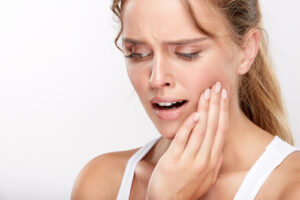Emergency Dentist
 Emergency Dentist @ Oakville has your emergency dental needs covered. Contact our office today to be seen as soon as possible!
Emergency Dentist @ Oakville has your emergency dental needs covered. Contact our office today to be seen as soon as possible!
Teeth that are naturally crooked, or have experienced fractures, decay, or wear and tear create problems for oral hygiene and eating. Emergency Dentists also reduce the effectiveness of your smile. These problems can often be overcome using porcelain crowns; once any needed procedures have been performed. Porcelain crowns are used to cover, or replace the entire external portion of the tooth, all the way to the gum-line. Porcelain crowns are a great choice for recreating the function and form of a damaged tooth. Enamel caps sculpted from porcelain offer the needed strength and the desired resilience of tooth enamel. Emergency Dentist always prefer your best.
Dental Emergency Prevention
How you can prevent a dental emergencies?
Watch your food: Eat healthy and nutritious food in order to help with cavities. Many dental emergencies stem from something small, like a small cavity, which can become a terrible toothache that demands treatment. Try to avoid any drinks or food that includes sugar and eat as healthy as you can. 2) Protect yourself from dental trauma: Whether you play a sport that can result in tooth injury or you simply grind your teeth during nighttime, you should use a mouthguard to make sure you stay safe. 3) Practice great oral hygiene: Make sure you are brushing your teeth at least twice a day, floss at least one time a day.
Sometimes, despite your best efforts, a dental emergency may happen and you will need an emergency dental professional immediately. Our team is ready to help you, no matter the type of dental emergency you have to deal with. Contact us today to get assistance.
Teeth Avulsion:
- Teeth avulsion is a medical/dental emergency that requires prompt recognition and treatment in the emergency department.
- Avulsed teeth are teeth which has be totally dislodge from the socket.
- Avulsion results in hypoxia and necrosis of the pulp of the tooth
- Reimplantation is the main goal of emergency care, to preserve the periodontal ligament attached to the roots.
Management of the avulsed tooth:
- Reinsertion is best done within a few hours of injury.
- The tooth should be cleaned with saline, then place into a storage medium. Avoid touching the root surface. The socket should be packed with sterile gauze.
- A storage medium is more important than time out of the mouth.
- Milk is the preferred storage medium, flavoured milk has no use, and the tooth should be kept in milk for transport with an ice pack around the milk if possible. Saline/saliva can also be used if milk is not available.
- Don’t get the patient to hold the tooth in the buccal pouch, milk has been shown to be just as effective, and some patients have ended up swallowing the tooth.
- The socket should be irrigated with saline, and local anesthetic can be used to provide analgesia, before reinserting the tooth.
- Once the tooth has been reinserted, it needs to be splinted in place, while awaiting definitive management. Splinting can be achieved by molding Blu-tac or aluminum foil around the tooth to hold it in place.
- Advise patient not to eat or drink anything hot or cold, until definitive care.
- Early and prompt referral to a dentist.
Intrusion:
Partial or complete displacement of the tooth inside the socket.
Clinical features: Pain and displacement of the tooth into the socket. It is more commonly seen in the maxilla because of the thinner bone surrounding the tooth root. The intruded tooth may injure the underlying developing tooth bud in primary dentition, causing abnormalities in tooth eruption and possible defects affecting the enamel or other vital structures of permanent teeth.9
Treatment: Urgently refer to a general dentist (as early as possible) as no further treatment is required from the GP. Simple analgesia may be prescribed depending on the severity of the injury.8 Advise a soft diet until review by the dental officer.
Teeth Avulsion:
- Teeth avulsion is a medical/dental emergency that requires prompt recognition and treatment in the emergency department.
- Avulsed teeth are teeth which has be totally dislodged from the socket.
- Avulsion results in hypoxia and necrosis of the pulp of the tooth
- Reimplantation is the main goal of emergency care, to preserve the periodontal ligament attached to the roots.
Management of the avulsed tooth:
- Reinsertion is best done within a few hours of injury.
- The tooth should be cleaned with saline, then place into a storage medium. Avoid touching the root surface. The socket should be packed with sterile gauze.
- A storage medium is more important than time out of the mouth.
- Milk is the preferred storage medium, flavoured milk has no use, and the tooth should be kept in milk for transport with an ice pack around the milk if possible. Saline/saliva can also be used if milk is not available.
- Don’t get the patient to hold the tooth in the buccal pouch, milk has been shown to be just as effective, and some patients have ended up swallowing the tooth.
- The socket should be irrigated with saline, and local anesthetic can be used to provide analgesia, before reinserting the tooth.
- Once the tooth has been reinserted, it needs to be splinted in place, while awaiting definitive management. Splinting can be achieved by moulding Blu-tac or aluminum foil around the tooth to hold it in place.
- Advise patient not to eat or drink anything hot or cold, until definitive care.
- Early and prompt referral to a dentist.
